Edith Clayton (1920–1989)
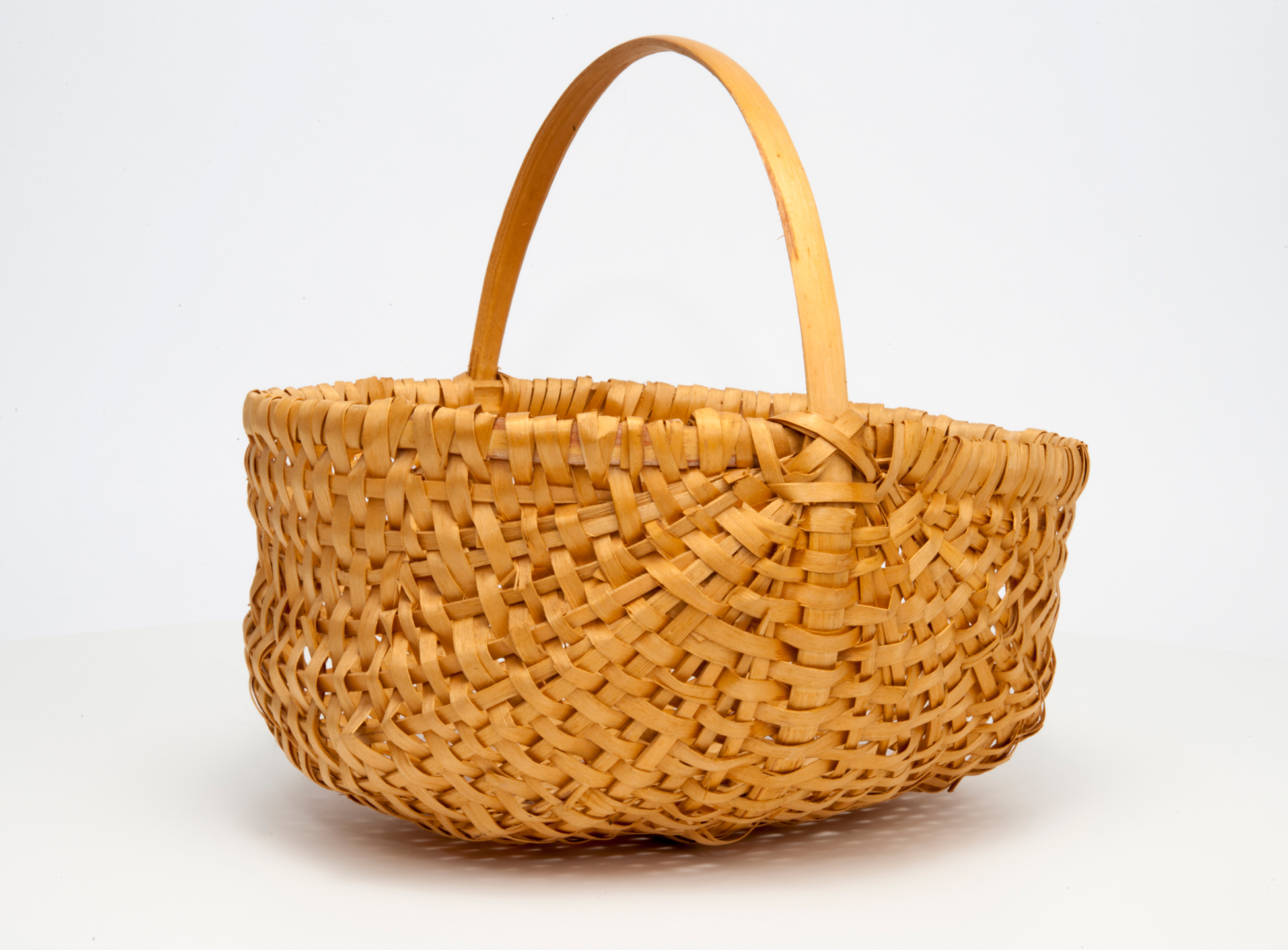
Edith Clayton, Market Basket, 1975
Wood and maple, 28 x 29 x 27 cm; depth: 13 cm
Nova Scotia Museum, Halifax
Edith Clayton was born Edith Drummond in 1920 in Cherry Brook, a predominantly African Nova Scotian community outside of Dartmouth. Clayton’s ancestors were Black Loyalists, former slaves who fled the United States during the Revolutionary War and the War of 1812.
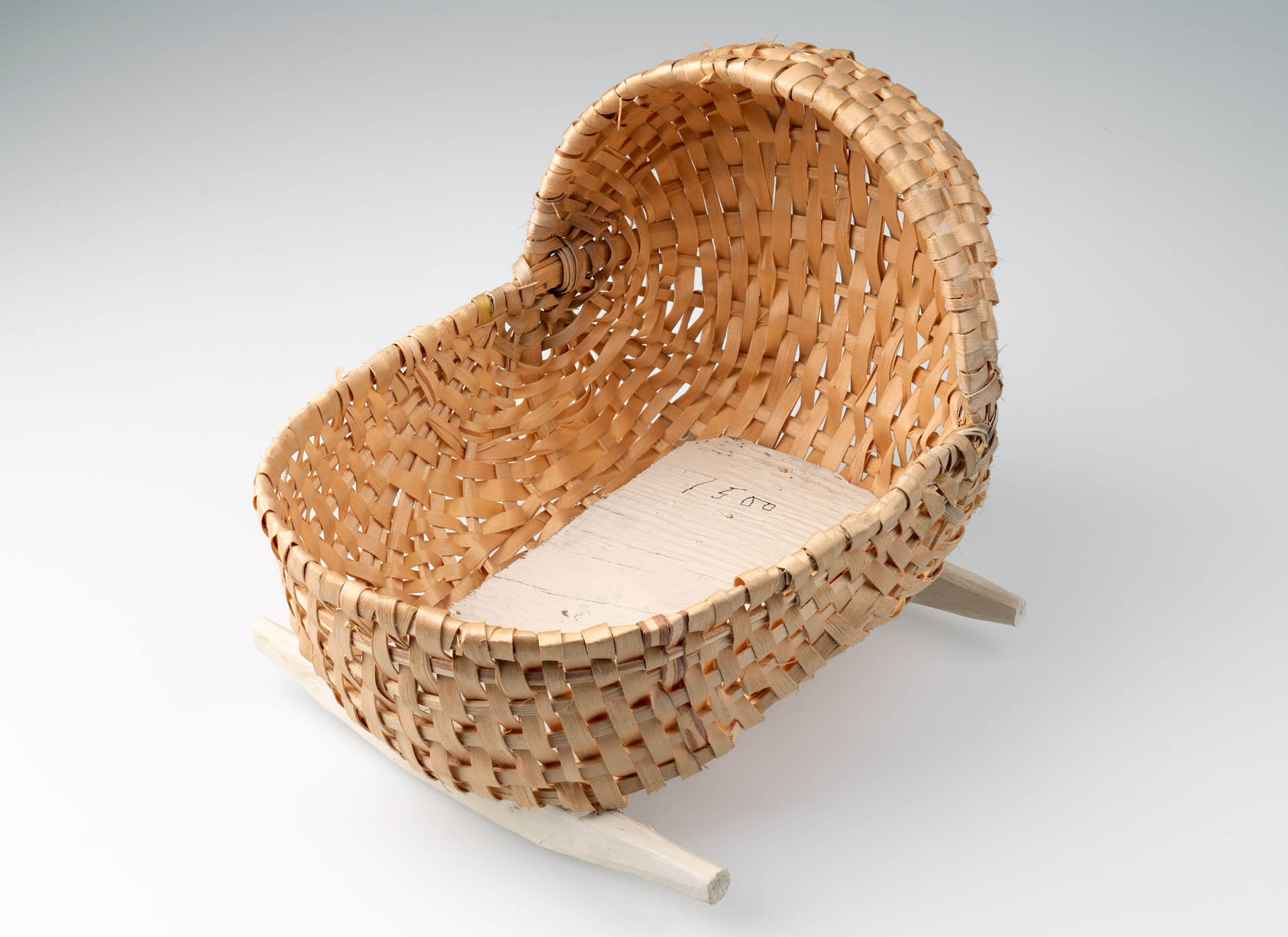
Clayton was taught to make splintwood baskets by her mother, carrying on a traditional African technique passed down for six generations in Clayton’s family. Clayton was eight when she made her first basket, joining a family tradition of making baskets for use and for sale. Basket making supplemented what were often meagre, seasonal incomes for African Nova Scotians, and throughout her life Clayton would bring her baskets, cradles, platters, and other objects to sell at the Halifax Farmers’ Market. She made hundreds of baskets a year.
The basket technique Clayton learned from her mother combined African and British styles. As curator Dan Conlin has noted, “African women had taken their African basket-making skills, and on American plantations, had adapted them to English-style basket making. It’s very distinctive, they’re called ribbed baskets.” Clayton learned the use of natural dyes from local Mi’kmaw women (who had their own tradition of basket making), and she created distinctive and colourful designs on her weavings, adding a new element to a traditional African Nova Scotian tradition. Her husband, Clifford, gathered the red maple that she used (Mi’kmaw basket makers traditionally use white ash), and she taught many of her daughters to weave, continuing the family tradition.
She also taught others outside her family the splintwood process, teaching evening classes in basket weaving in Dartmouth for the Department of Continuing Education. Her interest in sharing this traditional knowledge resulted in the book Edith Clayton’s Market Basket: A Heritage of Splintwood Basketry in Nova Scotia, which she co-wrote with Joleen Gordon (b.1945) in 1977.
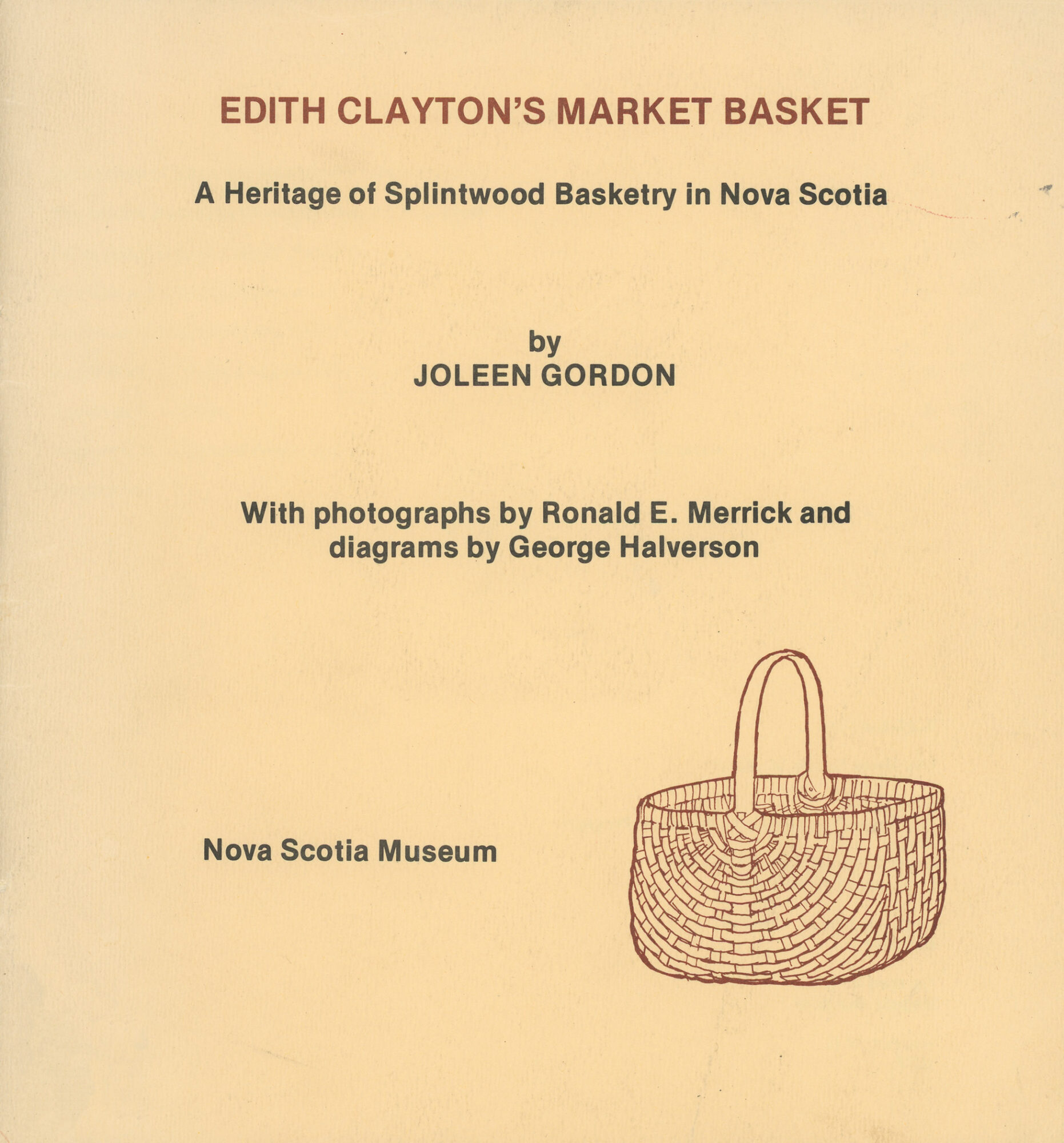
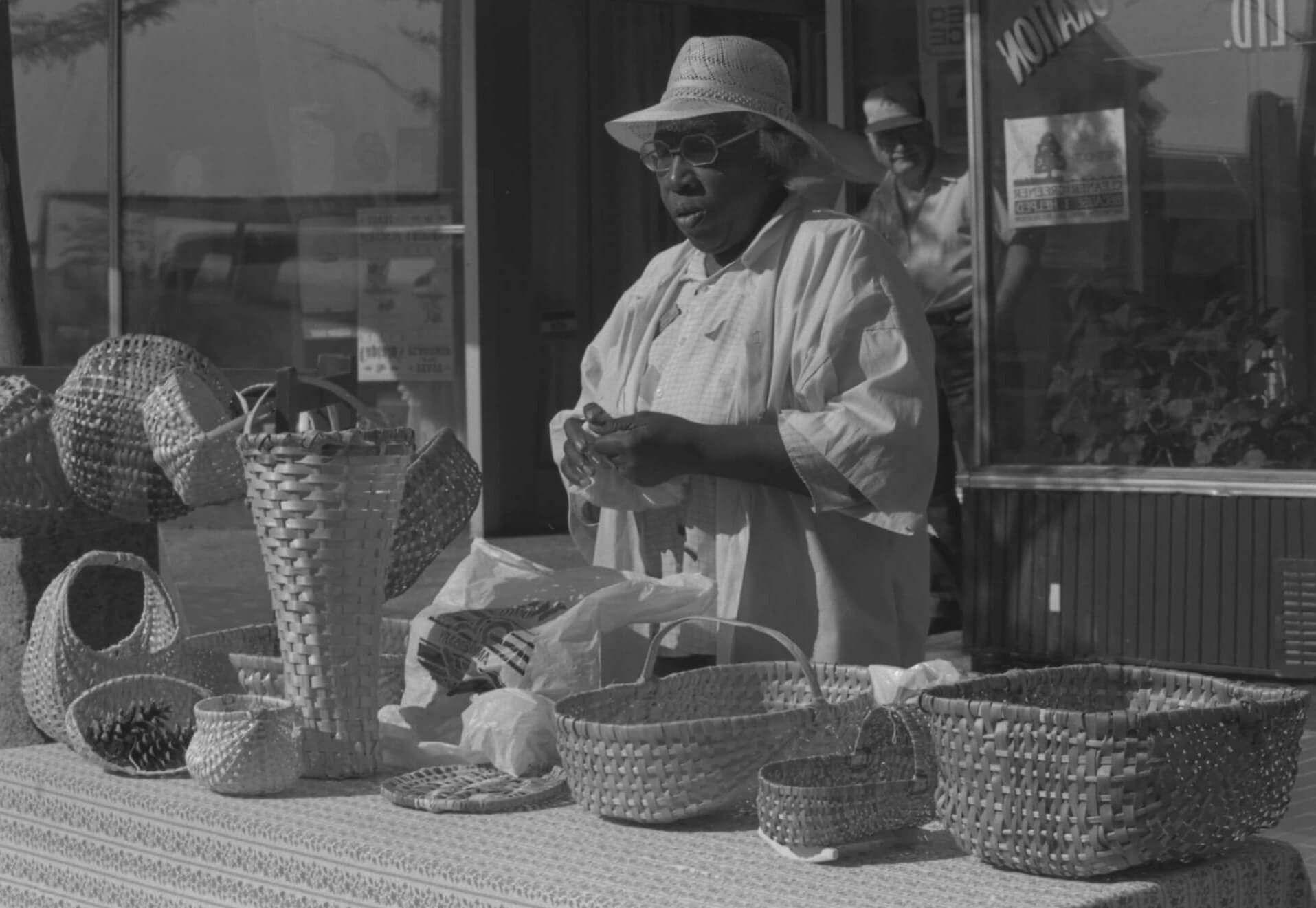
Clayton’s work was included in craft shows across Canada, and in 1986 she represented Nova Scotia at Expo 86, travelling to Vancouver to demonstrate her technique at the Canadian Pavilion. In 1977 Clayton was awarded a Queen Elizabeth II Silver Jubilee Medal. Clayton was featured in the 1989 documentary Black Mother Black Daughter, directed by Sylvia D. Hamilton and Claire Prieto (b.1945).

 About the Author
About the Author
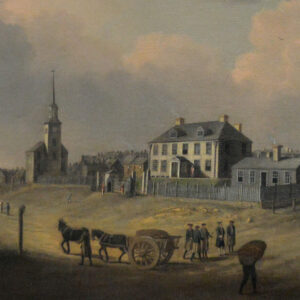 More Online Art Books
More Online Art Books
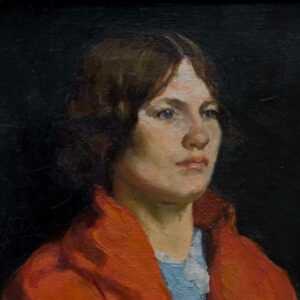 Acknowledgements
Acknowledgements